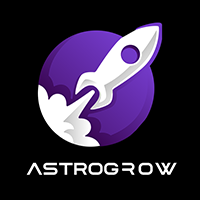
The Future of Farming: Embracing Astrogrowth
As the world faces challenges related to food security, climate change, and environmental degradation, innovative solutions are essential. astrogrowth astrogrowth is emerging as a revolutionary concept that combines agricultural practices with advanced space technologies, addressing these urgent issues while suggesting a path for sustainable development in farming.
What is Astrogrowth?
Astrogrowth refers to the integration of space-based technologies and agricultural practices to enhance productivity, sustainability, and resilience in food production systems. The key idea is to leverage insights and tools developed through space exploration and satellite technologies to improve the efficiency and sustainability of farming on Earth.
The Importance of Astrogrowth in Agriculture
With the projected global population reaching nearly 10 billion by 2050, it’s crucial to harness new methodologies to meet the increasing demand for food. Astrogrowth provides tools and techniques that allow farmers to increase yields while minimizing environmental impacts. Some of the core components of astrogrowth include:
- Precision Agriculture: Technologies such as GPS, remote sensing, and drones enable farmers to monitor crop health, soil quality, and water usage more effectively.
- Data-Driven Decision Making: The vast amounts of data generated from space technologies can be analyzed to improve farming practices, predict crop yields and optimize resource use.
- Eco-friendly Solutions: Astrogrowth promotes sustainable agricultural practices, such as reduced pesticide use and efficient water management.
How Astrogrowth Works
Astrogrowth operates on multiple levels, all interconnected through data and technology. Here’s how it typically unfolds:
1. Satellite Imagery and Remote Sensing
Satellite imagery allows for near-real-time monitoring of crop health, soil moisture levels, and land use changes. This information enables farmers to make timely decisions regarding irrigation, fertilization, and pest control.
2. Drones and Aerial Data Collection

Drones equipped with advanced sensors can cover vast agricultural areas quickly. They can gather data on crop growth stages, identify problem areas that require attention, and even apply treatments where necessary.
3. Predictive Analytics
By analyzing historical data and weather patterns, predictive analytics can forecast yields and help farmers manage risks associated with climatic fluctuations.
4. Automated Systems
The integration of automation in agriculture, such as robotic harvesting and automated irrigation systems, can significantly increase efficiency and reduce labor costs.
Benefits of Astrogrowth
The advantages of embracing astrogrowth are manifold:
- Increased Productivity: By utilizing space-based technologies, farmers can achieve greater yields from the same land area.
- Sustainable Practices: Astrogrowth encourages reduced use of chemicals and water, facilitating a healthier ecosystem.
- Global Collaboration: The principles of astrogrowth foster collaboration among nations in utilizing space technologies for common agricultural challenges.
Real-World Applications of Astrogrowth
There are several case studies where the principles of astrogrowth are being successfully implemented:
1. Vertical Farming and Remote Monitoring

Urban areas are increasingly turning to vertical farming. These farms utilize space-saving designs and are monitored via sensors that collect data on lighting, humidity, and temperature, ensuring optimal growing conditions.
2. Precision Livestock Farming
Farmers are implementing tracking systems for livestock, allowing them to monitor the health and behavior of animals in real time, leading to better care and optimized production practices.
3. Climate-Smart Agriculture in Developing Countries
Through initiatives that supply satellite data to farmers in developing regions, astrogrowth is offering solutions tailored to local conditions, aiding in resilience against climate change.
Challenges to the Adoption of Astrogrowth
While the potential of astrogrowth is vast, there are significant challenges to its widespread adoption:
- Infrastructure Costs: The initial investment for technology can be prohibitively expensive for some farmers and regions.
- Technological Literacy: Farmers may require training to effectively employ these advanced technologies.
- Data Privacy Concerns: With the increase in data collection, issues around data ownership and privacy may arise.
The Future of Astrogrowth
As research and technology continue to evolve, the principles and practices of astrogrowth are expected to become more refined and accessible. Public and private sector collaborations are crucial in promoting research and investment in these technologies. Additionally, educational initiatives aimed at farmers will aid in fostering a greater understanding of the benefits of astrogrowth.
Conclusion
Astrogrowth represents a beacon of hope in addressing the global challenges of food production, sustainability, and climate change. By harnessing the power of advanced technologies developed through space exploration, we can pave the way for a new era of agriculture that prioritizes efficiency, sustainability, and resilience. The adoption of these innovative farming practices could signify a transformative shift in the way food is produced, setting a new standard for future generations.

